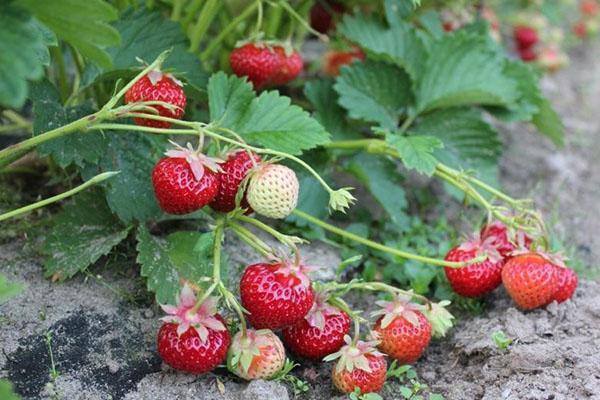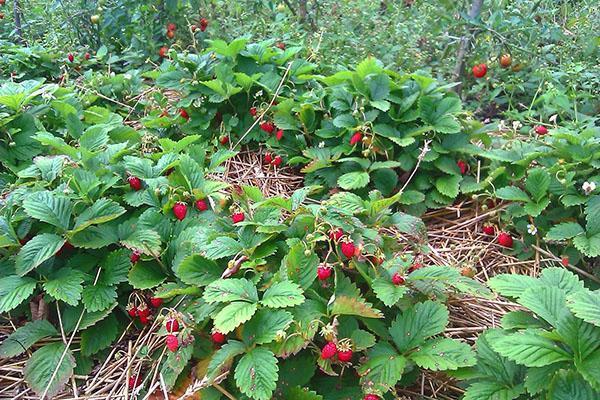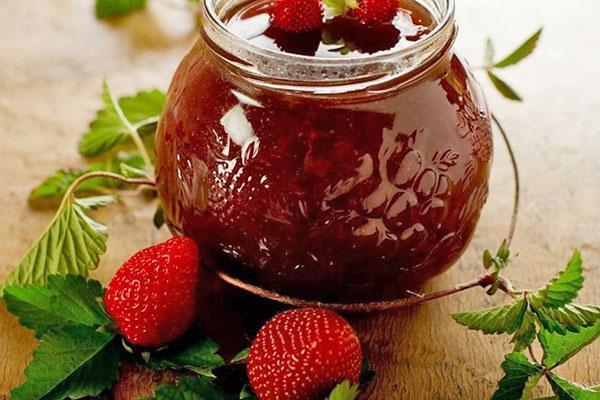Acquaintance with large-fruited remontant strawberries of the Koketka variety
 Strawberry Coquette renovation large-fruited is the most popular variety. She received her demand due to winter hardiness and long-term fruiting. It is a unique plant that has good properties. Description of the variety and photo of the coquette strawberry are presented below.
Strawberry Coquette renovation large-fruited is the most popular variety. She received her demand due to winter hardiness and long-term fruiting. It is a unique plant that has good properties. Description of the variety and photo of the coquette strawberry are presented below.
Plant feature

Each ripe fruit contains over 65% vitamin C and up to 9% sugar.
Strawberry Koketka is an early maturing variety, and the fruits of this plant are cone-shaped. Ripe berries with a sweet and sour taste and rich aroma. With proper care, they can reach 25 grams.
 A distinctive feature of this variety is the excellent taste of the berries. They can be used both raw and for making jam. The pulp is quite tender and very juicy. The berries are shiny, red in color.
A distinctive feature of this variety is the excellent taste of the berries. They can be used both raw and for making jam. The pulp is quite tender and very juicy. The berries are shiny, red in color.
The main advantages of this variety:
- Due to the fact that the plant does not form tendrils, it can be grown both in large and small areas.
- Bushes lend themselves well to weeding. It is easy and quick to harvest from them.
- The berries are easy to transport at different distances.
- The plant tolerates severe frosts well and does not respond to various diseases.
The Koketka large-fruited remontant strawberry develops well on various lands. Depending on the climate and place of planting, it can bear fruit up to 4 times a year.
Growing beardless strawberries
 The development of a plant and its fruiting directly depends on the method of reproduction and care. In order to grow a healthy young bush, you should know that it is best to do it with seeds. You can breed strawberries with a yoke and dividing a bush, but this requires special skills and great effort.
The development of a plant and its fruiting directly depends on the method of reproduction and care. In order to grow a healthy young bush, you should know that it is best to do it with seeds. You can breed strawberries with a yoke and dividing a bush, but this requires special skills and great effort.
 Planting mustacheless strawberries should only be carried out in a fertile and loose substrate. The earth should be composed of humus, sand and peat... You can also use purchased soil for germinating seeds. If you decide to prepare the soil for planting yourself, then it must be calcined for 20 minutes. This time will be enough for all kinds of larvae to die and not harm young plants.
Planting mustacheless strawberries should only be carried out in a fertile and loose substrate. The earth should be composed of humus, sand and peat... You can also use purchased soil for germinating seeds. If you decide to prepare the soil for planting yourself, then it must be calcined for 20 minutes. This time will be enough for all kinds of larvae to die and not harm young plants.
In order for the seeds to be evenly distributed on the surface of the soil, they must first be mixed with sand.
Seeds should be sown in March or late February. It is recommended to wet the grains with water for 5 hours before use. This will significantly speed up seed growth. At the end of this time, remove the seed from the water and let it dry well.
Sow strawberries it is necessary in small containers. An excellent option would be cups, the height of which does not exceed 5 cm. Before placing the grains in the soil, the soil must be watered abundantly with water. It is not worth deepening the seeds much, since they germinate under the influence of sunlight. For quick shoots, the containers must be covered with plastic and placed on the sunny side. It is best to grow remontant strawberry yoke at a temperature of about 240 FROM.It is necessary to moisten the soil with a spray bottle. If everything is done correctly, the first shoots will appear in 2 weeks.
If a common box was used for sowing seeds, then young plants must be dived.
 The procedure should be carried out when 2-4 full-fledged leaves appear on the bushes. The transplant must be done with a knife or other available material. When diving, special attention should be paid to deepening the bush. It is not worth making large dimples, as this can slow down the development of the bush.
The procedure should be carried out when 2-4 full-fledged leaves appear on the bushes. The transplant must be done with a knife or other available material. When diving, special attention should be paid to deepening the bush. It is not worth making large dimples, as this can slow down the development of the bush.
It is recommended to water the transplanted strawberries with a pipette. Keep containers in partial shade for some time, away from direct sunlight.
In order for young bushes to harden, boxes with seedlings should be taken out daily to fresh air, gradually increasing the residence time.
You can plant strawberries on the site 7 weeks after planting.  The land should be well cleared of weeds and various debris. The soil should be fertilized with compost and humus. It is best to bring them in in the fall, when digging a site. After planting, water the bushes well. In order for the plant to grow quickly and give a good harvest, it is necessary to periodically loosen the ground and remove weeds.
The land should be well cleared of weeds and various debris. The soil should be fertilized with compost and humus. It is best to bring them in in the fall, when digging a site. After planting, water the bushes well. In order for the plant to grow quickly and give a good harvest, it is necessary to periodically loosen the ground and remove weeds.
Knowing the description of the coquette strawberry and comparing it with other varieties, one can be convinced of the advantages of this type. By adhering to the basic planting rules, you can grow a healthy plant that will bear fruit several times a season.